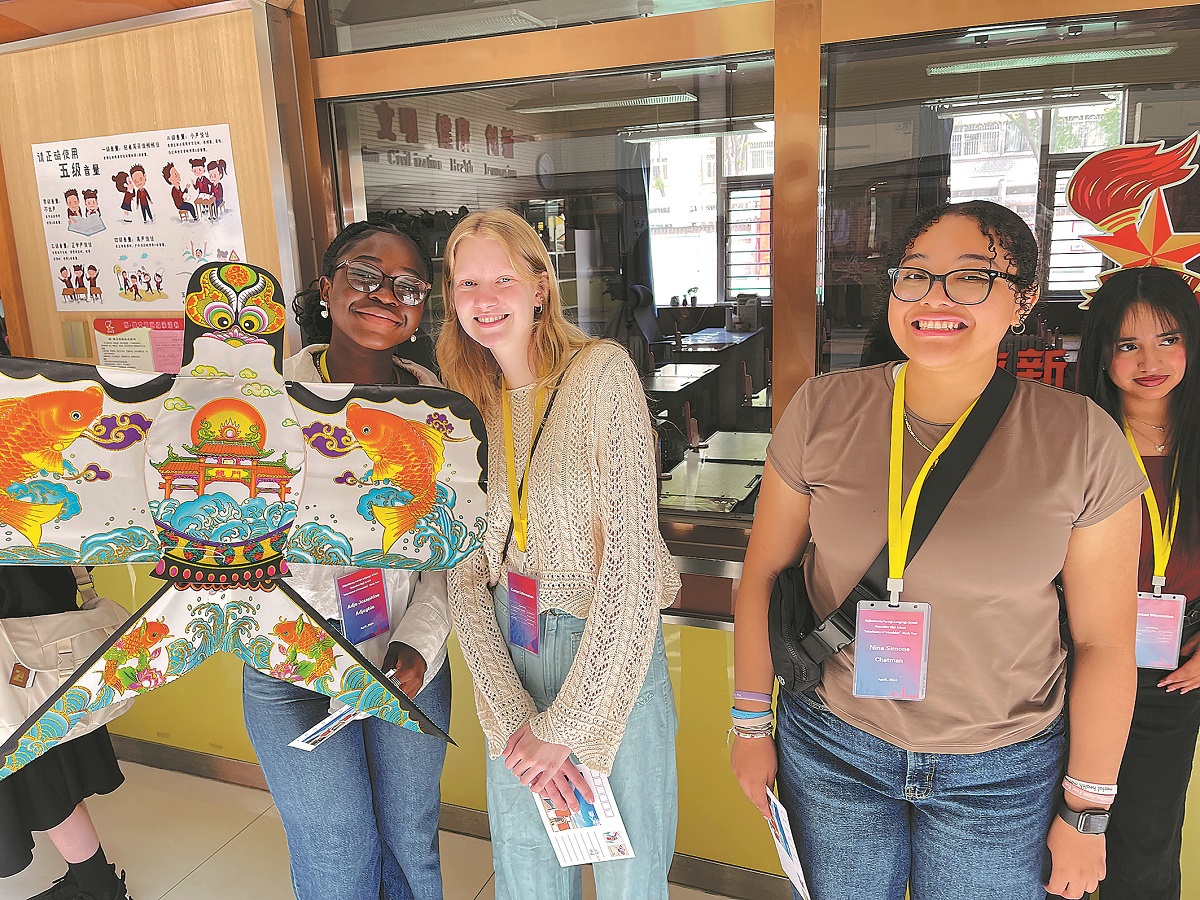Chinese, US students plant roots of friendship, understanding
Teenagers from Iowa form strong bonds, experience local culture on exchange trip
By Zhang Yunbi | China Daily | Updated: 2024-05-29 07:26

More than a month ago, high school students from China and Iowa in the United States' Midwest inaugurated and planted the first batch of trees for the China-US Friendship Youth Woods in Hebei province's Zhengding county, where President Xi Jinping worked as a senior local official from 1982 to 1985.
Zhou Yitian, a senior high student from Shijiazhuang Foreign Language School, planted a tree with her new friend, Grace Zorich from Muscatine High School.
"This is the first time I've planted a tree as big (as this), but I planted a tree before… a very little, little one," said Zorich. Her horticultural skills, including her proficiency with a shovel, impressed her Chinese teenage peers.
Zhou said: "I hope the tree grows robustly alongside our friendship. Of course, I'll be back someday to revisit these trees."
The woods, which feature species such as the North American red maple, are lush and thriving, and are expected to welcome more US students.
In San Francisco last November, President Xi proposed an ambitious program to invite a total of 50,000 American youths to visit China for exchanges over the next five years.
Hebei and Iowa are natural choices for boosting subnational bonds as they have enjoyed a sister relationship since 1983 and have had ongoing exchanges in the agricultural sector.
Two delegations from Muscatine High School have traveled to China and Hebei this year. The second delegation of 32 students and eight teachers stayed in Hebei from April 19 to 22 at the invitation of the Shijiazhuang Foreign Language School, one of the leading middle schools in the province.
It was the first time any of the US high school students had visited the country beyond the Pacific Ocean. They arrived in Beijing first, and then traveled to Hebei before heading to Shanghai to end the tour.
During the trip, students from both countries, such as Zhou and Zorich, were paired together.

Versed in culture
Liu Feng, vice-principal of Shijiazhuang Foreign Language School, which is affiliated with the main school, said they arranged for the US students to take part in calligraphy and paper-cutting classes so they "can have a taste of Chinese teenagers' school life".
They consulted the visitors in advance over the trip's arrangement, agenda, and itinerary to ensure adequate communication between students from both sides during the limited time they had together over four days.
The US students said they wanted to take Mandarin lessons with Chinese students.
Liu's school selected an ancient Chinese poem "Rural Life" as the centerpiece of the lesson:
"Over green grass orioles fly in vernal sky/
The mist intoxicates the willow trees./
Back early after school, the children try/
To fly the kites in eastern breeze."
Kristina Devries, one of the US students, admitted that the poem was a bit difficult for her. "It's mainly the tones," she said.
Yet after the class, most students could read the poem properly in Mandarin.
Observing that the poem echoed the then season of spring, Jasmine Montes, another US student, said, "It is really pretty and I like it."
When asked if US children fly kites these days like people did decades ago, Ryan Castle, principal of Muscatine High School, said: "Not as much any more. We used to. With phones and iPads, it's hard to get kids to fly kites."
Lyu Fei, an English teacher at Shijiazhuang Foreign Language Primary School, was involved in the special class for the guests and she had no language difficulties when talking to the US students. Her recipe for successful communication included body gestures and the use of humor.
"They are real quick learners," she said, saying the visitors mastered the poetry faster than she had expected.
"So, we had some extra minutes to review and practice more. I'm so proud!" she laughed.
Another first for the trip was the host school arranging a musical performance that involved collaboration between the Chinese students and their foreign guests.
The US students split up and went to several classrooms to be taught how to play the hulusi, or gourd flute, an easy-to-learn Chinese folk music instrument.
Later that afternoon, they joined the Chinese students on stage and together they played the song Auld Lang Syne using the hulusi. The performers received warm applause from the audience.
























